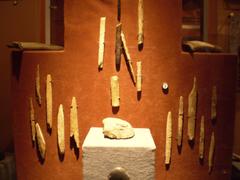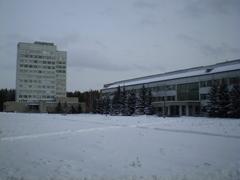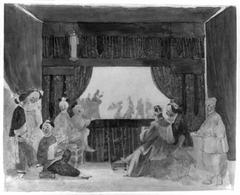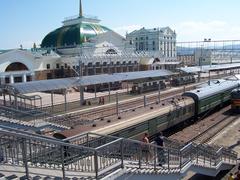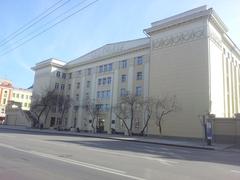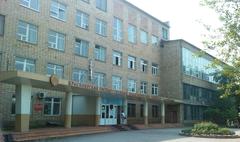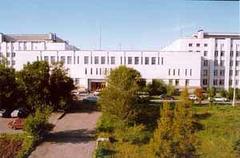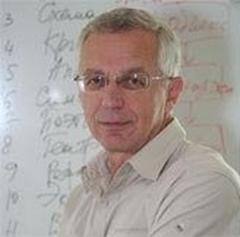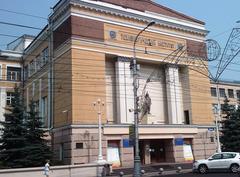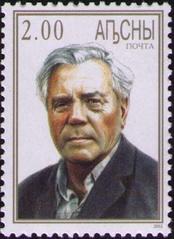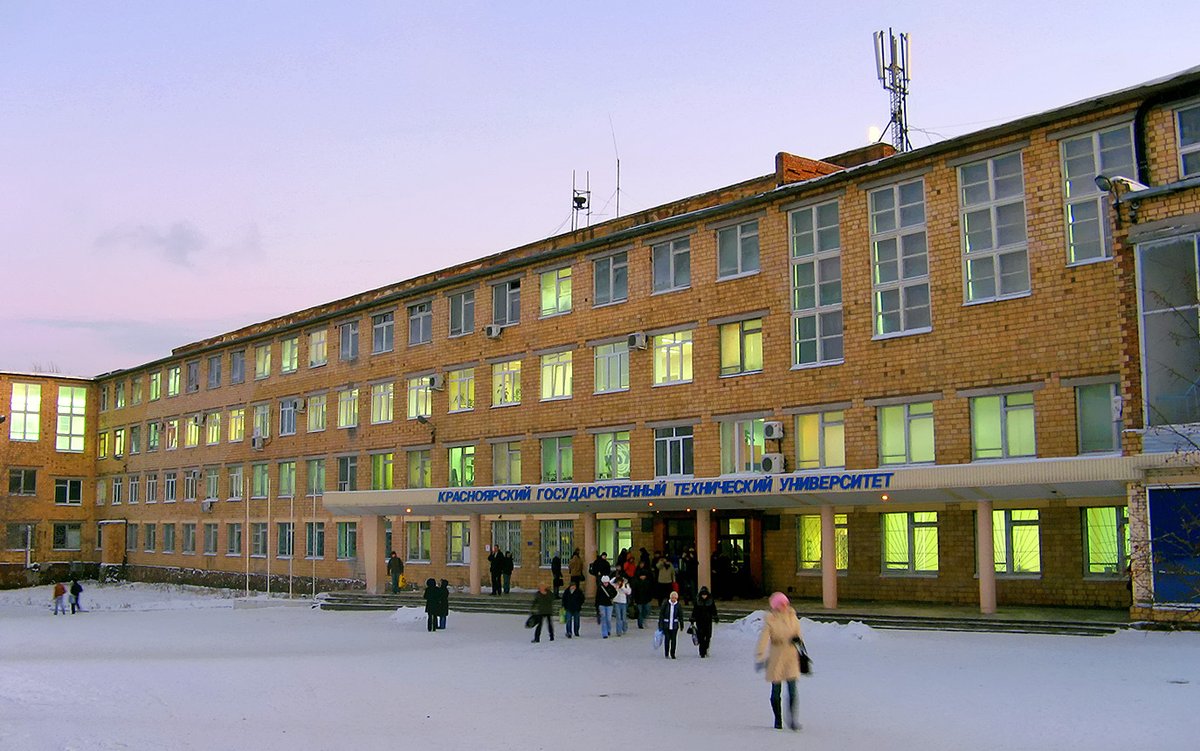
Krasnoyarsk State Technical University: Visiting Hours, Tickets, and Historical Information
Date: 15/06/2025
Introduction
Krasnoyarsk State Technical University (KSTU), established in 1956 and now an integral part of Siberian Federal University (SibFU), has long been a cornerstone of technical education and innovation in Siberia. Originally founded to supply highly skilled engineers for the Soviet Union’s ambitious industrial projects, KSTU’s trajectory mirrors the broader historical and technological transformations of the region. Its legacy is visible not only in its academic achievements but also in the urban landscape of Krasnoyarsk, where Soviet-era architecture and modern innovation centers exist side by side.
For visitors, the former KSTU campus presents a vibrant tapestry of history, culture, and technological milestones. From its monumental buildings and engineering-themed sculptures to interactive museums and observatories, the campus offers a unique window into Siberia’s educational and industrial heritage. This comprehensive guide details the university’s historical evolution, practical information for visitors—including opening hours, ticketing, accessibility, and travel insights—and highlights nearby attractions to help you make the most of your visit to this emblematic site. For the latest updates and official resources, consult the Krasnoyarsk City Administration and the Siberian Federal University Official Website.
Table of Contents
- Historical Overview
- Founding and Early Development
- Expansion and Academic Diversification
- Role During the Soviet Era
- Post-Soviet Transformation and Modernization
- Integration into Siberian Federal University
- Contributions to Regional and National Development
- Internationalization and Global Engagement
- Historical Significance and Legacy
- Visitor Information
- Contact Information and Resources
- Conclusion
- References and Further Reading
Historical Overview
Founding and Early Development
KSTU was established in 1956 amidst a surge of post-war industrialization in the Soviet Union, specifically to meet the demand for engineering expertise in Siberia’s energy, metallurgy, and transportation sectors. The university launched with faculties in mechanical, electrical, and civil engineering, closely collaborating with local industries for hands-on student training and research. This cooperation anchored KSTU’s status as a leading technical institution, deeply connected to the region’s industrial growth.
Expansion and Academic Diversification
The 1960s and 1970s saw KSTU’s rapid expansion, with new faculties in computer science, automation, and chemical engineering illustrating the institution’s adaptability to technological advancements (Krasnoyarsk City Administration). The campus grew to include modern laboratories, research centers, and student housing—often with support from industrial partners. Research achievements in hydroelectric power, materials science, and automation established KSTU as a regional innovation leader.
Role During the Soviet Era
KSTU graduates were instrumental in major projects such as the Krasnoyarsk Hydroelectric Power Station and modernization of the Trans-Siberian Railway. The university also engaged in nationwide scientific initiatives focused on industrial efficiency and environmental sustainability. In the 1980s, KSTU fostered academic exchange with other Soviet and Eastern European institutions, laying groundwork for future internationalization.
Post-Soviet Transformation and Modernization
With the collapse of the Soviet Union in 1991, KSTU shifted towards entrepreneurship, information technology, and international education standards. The adoption of the Bologna Process, expanded language offerings, and partnerships with universities worldwide marked a period of significant modernization (Krasnoyarsk City Administration).
Integration into Siberian Federal University
In 2006, KSTU became a founding member of SibFU, part of a national strategy to consolidate higher education and create world-class research hubs. As SibFU’s Institute of Engineering and Construction, the former KSTU continues its tradition of engineering excellence, with a strong focus on renewable energy, nanotechnology, and smart infrastructure.
Contributions to Regional and National Development
Tens of thousands of KSTU alumni have shaped Siberia’s energy, transportation, and scientific sectors. Beyond technical training, the university has fostered cultural and social development by hosting conferences, exhibitions, and public lectures (Krasnoyarsk City Administration).
Internationalization and Global Engagement
Today, SibFU is recognized for English-language programs, international research collaborations, and state-of-the-art facilities. Students from around the world are attracted not only by the quality of education but also by the city’s vibrant cultural and natural offerings, such as the Stolby Nature Reserve (Krasnoyarsk City Administration).
Historical Significance and Legacy
KSTU’s evolution highlights its adaptability and ongoing impact on Siberia’s development. Its legacy is evident in the achievements of graduates, research contributions, and its role in shaping Krasnoyarsk as a center of innovation and learning.
Visitor Information
Campus Monuments and Museums
Krasnoyarsk State Technical University Monument
Located at the heart of the SibFU campus, the KSTU Monument honors the university’s contribution to Siberian engineering and education. Adjacent is the Monument to Engineers, a celebrated sculpture symbolizing the region’s technical legacy. Also noteworthy are the Museum of Science and Technology—featuring interactive exhibits on regional engineering history—and the university observatory, which hosts public stargazing events.
Main Academic Buildings
The campus, along Prospekt Svobodny, showcases Soviet monumentalism and contemporary architecture, with highlights including the central library (over a million volumes), Innovation and Technology Center, and landscaped courtyards with public art.
Visiting Hours and Ticketing
- General Campus Hours: Monday–Saturday, 9:00 AM–6:00 PM
- KSTU Monument Area: Daily, 8:00 AM–8:00 PM
- Library and Museums: Monday–Saturday, 9:00 AM–6:00 PM (some facilities may have extended hours during events)
- Admission: Campus and outdoor monuments are free. Museum and guided tour tickets typically range from 100–300 RUB and are available online or at the campus information desk.
Guided tours (including English-language options) are available by appointment; booking in advance is recommended, especially during peak seasons (Siberian Federal University Official Website).
Campus Accessibility and Services
- Accessibility: The campus is wheelchair accessible, with ramps, elevators, and bilingual signage.
- Visitor Services: Orientation sessions, cultural exchange programs, and self-guided tour maps are available through the International Office.
- Dining: Multiple cafeterias offer Russian and international cuisine. Cafes and vending machines provide refreshments.
- Wi-Fi and Amenities: Free Wi-Fi, ATMs, and convenience stores are available on campus.
Travel Tips and Getting There
- By Air: Arrive via Yemelyanovo International Airport (KJA), 40 km from the city center. Taxis and airport shuttles connect to central Krasnoyarsk, with buses and trams serving the university district (wildtrips.net).
- By Train: The city is a key stop on the Trans-Siberian Railway. The main station links to the campus via public transport.
- Public Transport: Buses, trams, and trolleybuses serve the university. River trams operate in summer (rusvuz.com).
- Parking and Bicycles: On-campus parking and bike racks are available.
Nearby Attractions
- Stolby Nature Reserve: Renowned for rock formations and hiking trails.
- Paraskeva Pyatnitsa Chapel: Historic site overlooking the city and Yenisei River.
- Yenisei River Embankment: Popular for scenic walks.
- Regional Museum of Local Lore: Offers insights into Siberian culture and history (wildtrips.net).
Events and Seasonal Highlights
- Annual Open Day: Spring event with campus tours, exhibitions, and student performances.
- “Student Spring”: Cultural festival with music, dance, and art.
- Winter Celebrations: Ice sculpture displays and Russian New Year festivities.
Check the SibFU event calendar for details.
Practical Visitor Tips
- Language: Russian is the primary language; English tours and materials are available.
- Best Time to Visit: June–August for mild weather. Winter offers a unique Siberian experience, but temperatures can drop below -30°C (wildtrips.net).
- Safety: Krasnoyarsk is generally safe; exercise standard precautions.
- Photography: Allowed outdoors; special permission required inside labs and libraries.
- Tourist Information: Visit the Tourist Information Center at Lenina Street, 120 (misstourist.com).
Frequently Asked Questions (FAQs)
Q: Is there an entrance fee to visit the campus or monuments?
A: No, campus and outdoor monuments are free. Museums and guided tours require tickets.
Q: What are the KSTU visiting hours?
A: Campus hours are 9:00 AM–6:00 PM, Monday–Saturday; monument area is open daily, 8:00 AM–8:00 PM.
Q: Are guided tours available in English?
A: Yes, by advance booking through the International Office.
Q: Is the campus accessible for visitors with disabilities?
A: Yes, most facilities are accessible; contact the university for specific needs.
Q: Can I visit the library or borrow books?
A: Reading rooms are open to visitors; borrowing is reserved for students and staff.
Q: What are the best photo spots on campus?
A: The main administrative building, central library, Assembly Hall, and Monument to Engineers.
Contact Information and Resources
- Address: 26 Kirensky Street, 660074 Krasnoyarsk, Russian Federation
- Phone: +7 (3912) 49 7266
- Fax: +7 (3912) 49 7434
- Email: [email protected]
- Website: KSTU Official Website
- SibFU Campus Map
- Krasnoyarsk Tourist Attractions
- Official SibFU Website
- Krasnoyarsk City Tourism
Conclusion
Krasnoyarsk State Technical University, as part of SibFU, represents both a living monument to Siberian engineering and a dynamic academic hub. Its blend of historical architecture, educational innovation, and community engagement make it a must-visit site for history enthusiasts, academic travelers, and cultural adventurers alike. Plan your visit by consulting official university resources for current information on hours, tickets, and events.
For a richer experience, combine your campus exploration with Krasnoyarsk’s cultural and natural attractions. Stay updated through the Siberian Federal University Official Website and consider using the Audiala app for travel tips and cultural insights.
References and Further Reading
- Study in Krasnoyarsk! (Krasnoyarsk City Administration)
- About SibFU (Siberian Federal University Official Website)
- SibFU Visitor Page (https://www.sfu-kras.ru/en/about)
- Official City Tourism Site (Krasnoyarsk City Tourism)
- Krasnoyarsk Russia: What to Visit (wildtrips.net)
- Krasnoyarsk State Technical University Siberian Federal University (rusvuz.com)
- Krasnoyarsk State Technical University Siberian Federal University (eduinrus.com)
- Krasnoyarsk Krai Russia Itinerary (misstourist.com)

